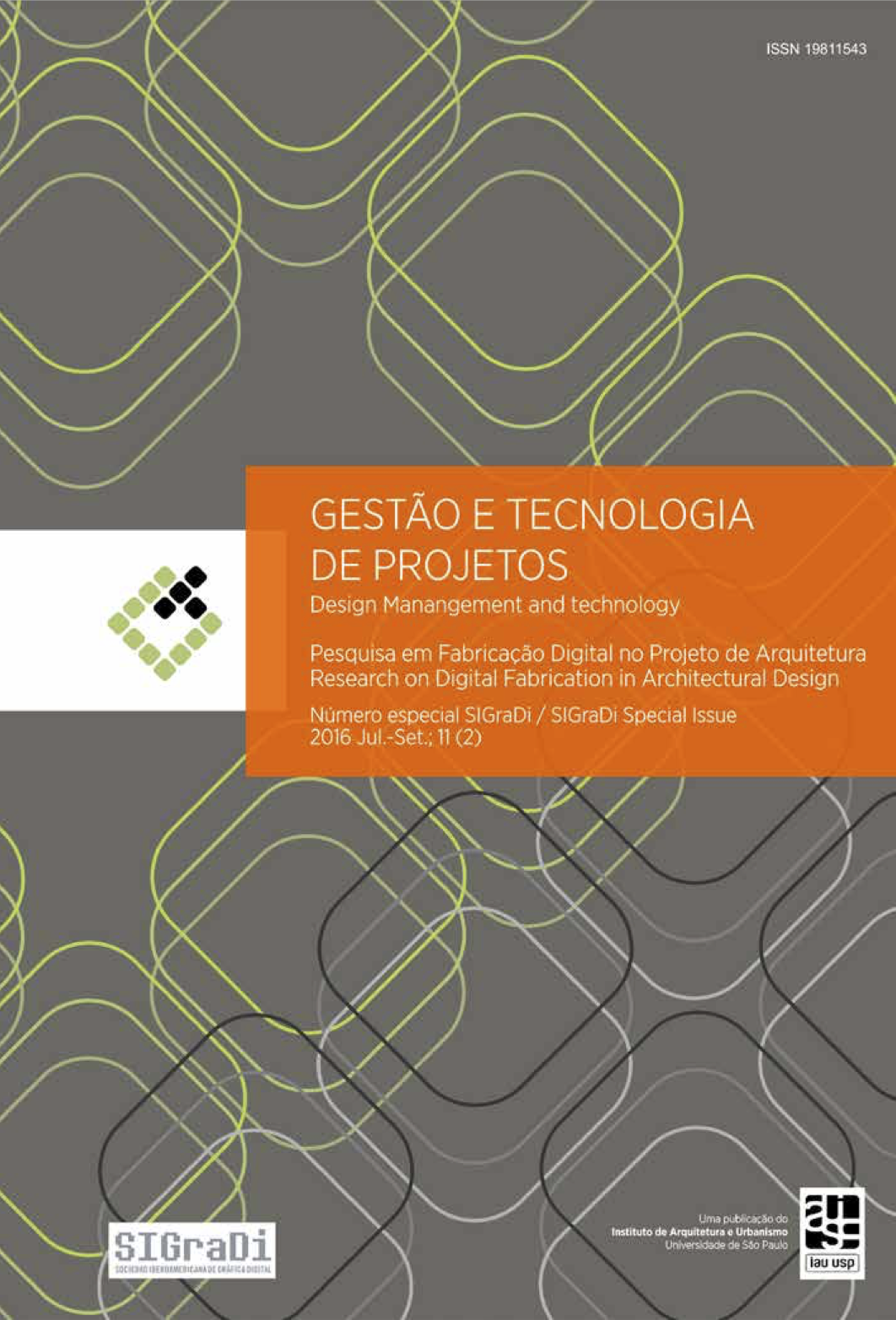Desenho Computacional e Simulação de Estruturas Auxéticas de Flexão-Ativa
DOI:
https://doi.org/10.11606/gtp.v11i2.118141Palavras-chave:
Auxetics, Computational Design, Form-Finding, Synclastic Shell, 3D-printingResumo
O artigo investiga a potencial aplicação de estruturas auxéticas na arquitetura através da combinação de métodos de desenho computacional e Manufatura Aditiva (MA). Essa classe de materiais apresenta comportamento interessante relacionado à característica pouco comum de possuir coeficiente de Poisson negativo, ou seja, ao contrário de outros materiais, quando tracionados expandem-se transversalmente e quando comprimidos contraem-se transversalmente. Explora-se um novo campo de pesquisa e design onde diferentes arranjos de auxéticos são estudados com intuito de informar um processo de form-finding de estruturas de cascas nervuradas sinclásticas de flexão-ativa (bending-active). Metodologias computacionais foram empregadas para visualizar o comportamento dinâmico destas estruturas utilizando Sistemas Massa-Mola. Princípios para o projeto e fabricação de cascas nervuradas auxéticas são investigados através de fabricação aditiva em diferentes escalas. Este processo é empregado para produzir modelos em escala úteis para a compreensão do comportamento auxético, assim como visionar a fabricação de mega-estruturas auxéticas com organização micro estrutural ótima. A resistência à flexão destes sistemas é cautelosamente controlada pelo uso de arranjos de enchimento variável informados por análise estrutural. Finalmente, é proposto um protótipo de casca nervurada em tamanho real como estudo de caso, em conjunto com um novo conceito para sua construção em fabricação aditiva in situ.Downloads
Os dados de download ainda não estão disponíveis.
Downloads
Publicado
08-11-2016
Edição
Seção
Artigos
Licença
Autores que publicam nesta revista concordam com os seguintes termos:
- Autores mantém os direitos autorais e concedem à revista o direito de primeira publicação, com o trabalho simultaneamente licenciado sob a Licença Creative Commons Attribution-NonCommercial-NoDerivatives 4.0 que permite o compartilhamento do trabalho com reconhecimento da autoria e publicação inicial nesta revista.
- Autores têm autorização para assumir contratos adicionais separadamente, para distribuição não-exclusiva da versão do trabalho publicada nesta revista (ex.: publicar em repositório institucional ou como capítulo de livro), com reconhecimento de autoria e publicação inicial nesta revista.
- Autores têm permissão e são estimulados a publicar e distribuir seu trabalho online (ex.: em repositórios institucionais ou na sua página pessoal) a qualquer ponto antes ou durante o processo editorial, já que isso pode gerar alterações produtivas, bem como aumentar o impacto e a citação do trabalho publicado (Veja O Efeito do Acesso Livre).
Como Citar
NABONI, Roberto; MIRANTE, Lorenzo. Desenho Computacional e Simulação de Estruturas Auxéticas de Flexão-Ativa. Gestão & Tecnologia de Projetos, São Carlos, v. 11, n. 2, p. 59–72, 2016. DOI: 10.11606/gtp.v11i2.118141. Disponível em: https://revistas.usp.br/gestaodeprojetos/article/view/118141.. Acesso em: 4 jan. 2026.








